The 20th Taipei Children’s Arts Festival (台北兒童藝術節) officially opened on Saturday last week, but really gets underway today, with a score of groups from around Taiwan and the world in town for a month of activities.
There are nine ticketed performances, several of which are already sold out, and 14 free shows, plus exhibitions.
The theme of this year’s festival is “Different in Between” and the programs, which include theater, puppetry, dance and circus, reinterpret classic stories or everyday objects to encourage audiences to see things from different perspectives.
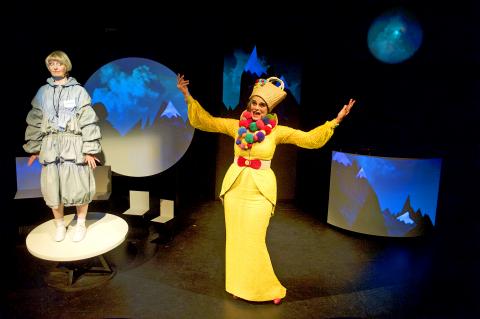
Photo courtesy of Rob McDougall
For example, the folks at the Taipei Performing Arts Center — the facility still under construction in Shilin District (士林) — have developed There’s No Big Bad Wolf Here (這裡沒有大野狼), which was inspired by European fairytale Little Red Riding Hood, as well as playground equipment.
It will be performed at Zhongshan Hall 16 times between July 20 and 28, with the first four shows aimed at toddlers aged one to three and the rest at children aged four and up. The show runs 60 to 70 minutes and tickets are NT$700.
This year’s festival also aims to bring performances to a variety of locals, from indoor theaters and community centers to neighborhood parks, with smaller shows during the week and large-scale outdoor performances on the weekends, weather permitting, of course.
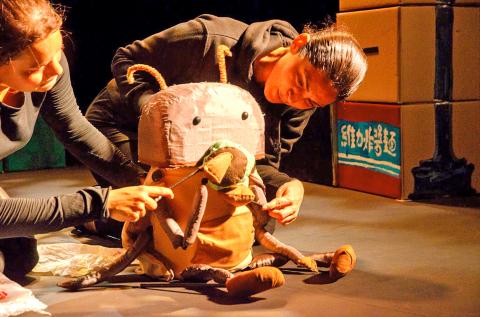
Photo courtesy of Team Furry Tails
One such event is Xics del Xurrac, an interactive art piece created by Tombs Creatius from Catalonia, which will be staged at the Bopiliao Historic Block in Wanhua District (萬華) from 10am to 5pm from today through Aug. 4, except for Mondays.
Catalonia is famous for its castellers who form human towers, usually topped by a child, during festivals, in a tradition that dates back hundreds of years. Tombs Creatius has created a series of 16 games that utilize the different skills, which they have grouped into four sections to reflect the four main casteller principles.
One theater production worth snatching a seat at is La Caputxeta Galactica by Insectotropics from Spain, which is at the Metropolitan Hall for three shows tomorrow and Saturday, with tickets priced at NT$300 and NT$400.
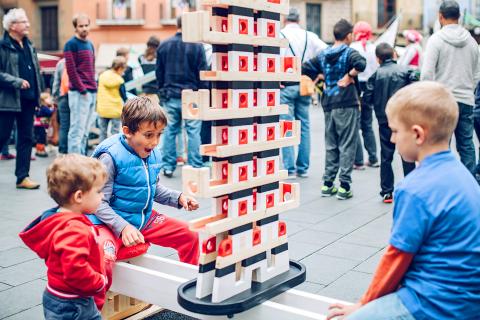
Photo courtesy of Tombs Creatius
Another is Australia’s Windmill Theatre Co’s critically acclaimed production of Baba Yaga, which was a sold-out hit at last year’s Edinburgh International Children’s Festival. It will show at the Wellspring Theater for four shows on Aug. 3 and 4, with tickets priced at NT$400.
However, as of press time last night, several shows were already sold out, including World Images by Theatre Madam Bach from Denmark and the festival’s own Buchettino — a coproduction with Italy’s Societas Raffaello Sanzio — now in its ninth year. This weekend’s The Missing Magic Hat has just a few tickets left, as does the Carrousel des Moutons from Belgium, which will be performed on Aug. 3 and 4.
The festival has an easy-to-navigate Web site (www.tcaf.taipei) in Chinese and English with information on all the shows, venues and ticketing options.
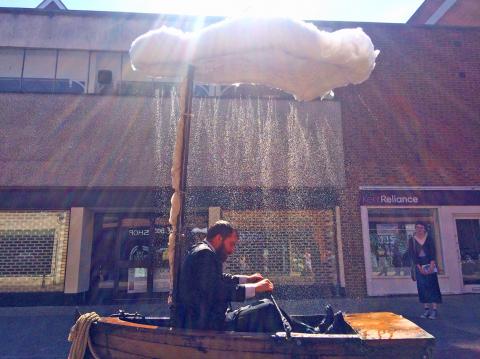
Photo courtesy of Acrojou
Tickets are available at the National Theater Concert Hall box offices, Eslite ticket desks, online (www.artsticket.com.tw) and at convenience store ticket kiosks.
For the free shows, seating is on a first-come, first-served basis, with entry opening an hour before show times.
MEANWHILE AT WEIWUYING
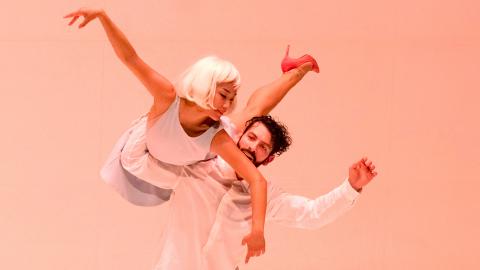
Photo courtesy of Fred Fouche
Families in Kaohsiung should not feel left out, as the Taiwanese-Italian partnership of Peng Shih-ya (彭詩雅) and Marco Di Nardo bring Company Wang Ramirez’s W.A.M. We Are Monchichi (我們是萌奇奇) to The Playhouse at the National Kaohsiung Center for the Arts (Weiwuying) this weekend.
Hip-hop dancer/choreographers Wang Honji and Sebastien Ramirez met in France in 2007 and their company, WangRamirez, premiered its first production,AP15, three years later.
The show won a Bessie award in New York City for outstanding dance performance in 2013.
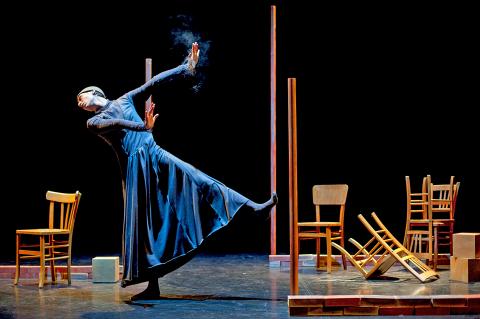
Photo courtesy of Philippe Laurencon
Last year, Wang and Ramirez adapted their 2011 work We Are Monchichi, a fusion of hip-hop and dance theater, into a production aimed at children and their families.
W.A.M. We Are Monchichi tells the story of how an young Italian man and a Taiwanese dancer meet and learn to deal with ideas and stereotypes about each other’s cultures and language barriers.
The story is told in sequences and accompanied by text written by Fabrice Melquiot, who collaborated with WangRamirez on the rewrite and dramaturgy, although it incorporates details from Peng and Di Nardo’s lives.
The dancers describe themselves as two people sharing four cultures, as Peng was born in Taiwan, but lives in Paris, while Di Nardo was born in Naples, but lives in Berlin.
The show runs 55 minutes and is aimed at children aged seven and up.
This story has been corrected since it was first published to correct that it is Peng Shih-ya who was born in Taiwan and Marco Di Nardo in Italy, not Wang Honji and Sebastien Ramierez respectively.
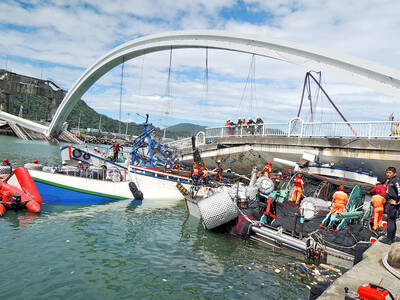
Before the recall election drowned out other news, CNN last month became the latest in a long line of media organs to report on abuses of migrant workers in Taiwan’s fishing fleet. After a brief flare of interest, the news media moved on. The migrant worker issues, however, did not. CNN’s stinging title, “Taiwan is held up as a bastion of liberal values. But migrant workers report abuse, injury and death in its fishing industry,” was widely quoted, including by the Fisheries Agency in its response. It obviously hurt. The Fisheries Agency was not slow to convey a classic government

Not long into Mistress Dispeller, a quietly jaw-dropping new documentary from director Elizabeth Lo, the film’s eponymous character lays out her thesis for ridding marriages of troublesome extra lovers. “When someone becomes a mistress,” she says, “it’s because they feel they don’t deserve complete love. She’s the one who needs our help the most.” Wang Zhenxi, a mistress dispeller based in north-central China’s Henan province, is one of a growing number of self-styled professionals who earn a living by intervening in people’s marriages — to “dispel” them of intruders. “I was looking for a love story set in China,” says Lo,

It was on his honeymoon in Kuala Lumpur, looking out of his hotel window at the silvery points of the world’s tallest twin skyscrapers, that Frank decided it was time to become taller. He had recently confessed to his new wife how much his height had bothered him since he was a teenager. As a man dedicated to self-improvement, Frank wanted to take action. He picked up the phone, called a clinic in Turkey that specializes in leg lengthening surgery — and made a booking. “I had a lot of second thoughts — at the end of the day, someone’s going

The next few months will be critical in determining the future of the Taiwan People’s Party (TPP). Following party founder Ko Wen-je’s (柯文哲) arrest in September last year, Huang Kuo-chang (黃國昌) effectively became the de facto face of the party and officially became chairman in January. While Ko frequently criticized the ruling Democratic Progressive Party (DPP) and insinuated sinister intentions on the part of the DPP’s New Tide faction, his era was largely defined by the TPP slogan “rational, pragmatic, scientific,” albeit defined largely by his definition of what that meant. The tone and language used by the TPP changed dramatically